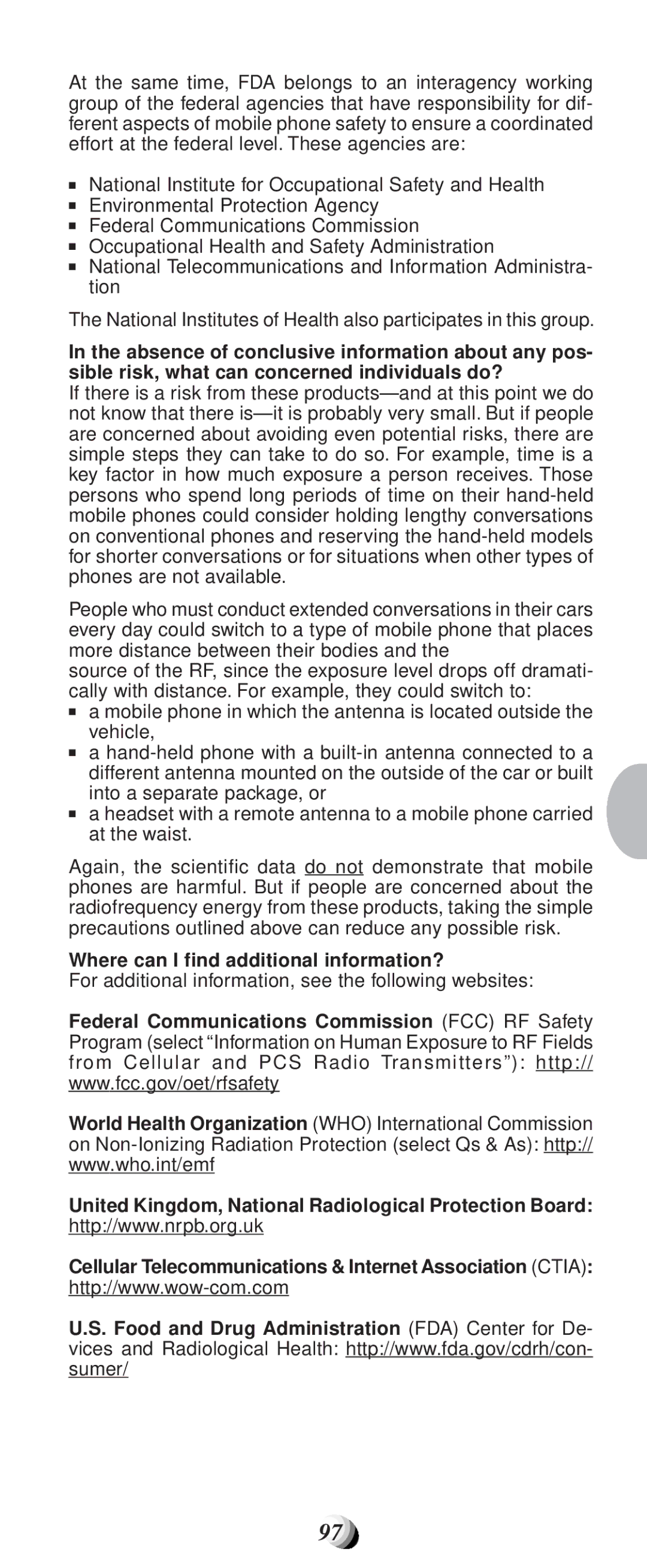
At the same time, FDA belongs to an interagency working group of the federal agencies that have responsibility for dif- ferent aspects of mobile phone safety to ensure a coordinated effort at the federal level. These agencies are:
■National Institute for Occupational Safety and Health
■Environmental Protection Agency
■Federal Communications Commission
■Occupational Health and Safety Administration
■National Telecommunications and Information Administra- tion
The National Institutes of Health also participates in this group.
In the absence of conclusive information about any pos- sible risk, what can concerned individuals do?
If there is a risk from these
People who must conduct extended conversations in their cars every day could switch to a type of mobile phone that places more distance between their bodies and the
source of the RF, since the exposure level drops off dramati- cally with distance. For example, they could switch to:
■a mobile phone in which the antenna is located outside the vehicle,
■a
■a headset with a remote antenna to a mobile phone carried at the waist.
Again, the scientific data do not demonstrate that mobile phones are harmful. But if people are concerned about the radiofrequency energy from these products, taking the simple precautions outlined above can reduce any possible risk.
Where can I find additional information?
For additional information, see the following websites:
Federal Communications Commission (FCC) RF Safety Program (select “Information on Human Exposure to RF Fields from Cellular and PCS Radio Transmitters”): http:// www.fcc.gov/oet/rfsafety
World Health Organization (WHO) International Commission on
United Kingdom, National Radiological Protection Board: http://www.nrpb.org.uk
Cellular Telecommunications & Internet Association (CTIA):
U.S. Food and Drug Administration (FDA) Center for De- vices and Radiological Health: http://www.fda.gov/cdrh/con- sumer/
97
